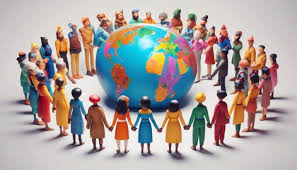In culturally diverse classrooms, the thoughtful teacher constantly seeks authentic resources that introduce young learners to global perspectives and cultural traditions beyond their immediate experience. Carefully selected kids animated shows increasingly serve this purpose, offering windows into diverse cultures through engaging stories, visually rich settings, and characters that represent various backgrounds. This approach aligns with multicultural education frameworks emphasizing the importance of early exposure to global perspectives for developing cultural competence and empathy.
Educational researchers have documented significant benefits when children encounter diverse cultural representations through animated content. These experiences build foundational understanding about global communities, challenge developing stereotypes, and normalize diversity as an everyday reality rather than an exceptional circumstance. When teachers facilitate discussions connecting animated cultural representations to classroom diversity initiatives, they create meaningful learning experiences that support inclusive classroom communities.
The most effective culturally diverse animated content avoids tokenism and stereotyping through authentic representation. Production teams that include cultural consultants and diverse creative staff produce more nuanced portrayals that respect cultural complexities while remaining accessible to young viewers. Teachers particularly value animated shows that present cultural practices within their proper context rather than as exotic curiosities.
Language exposure represents a significant benefit of culturally diverse animated content. When shows incorporate multiple languages, cultural-specific terminology, and authentic accents, they introduce children to linguistic diversity during critical developmental periods. Research indicates that this early exposure promotes phonological awareness, linguistic flexibility, and positive attitudes toward language learning.
Music and artistic traditions from various cultures feature prominently in well-designed multicultural animated content. These elements introduce children to diverse aesthetic traditions while creating emotional connections that transcend cultural boundaries. Teachers report that students often demonstrate increased interest in global music, art, and dance traditions following exposure to these elements in favorite animated shows.
Folktales, myths, and traditional stories adapted into animated formats provide valuable windows into cultural values and belief systems. These narrative traditions, presented respectfully through animation, help young viewers understand how different communities make meaning and transmit cultural knowledge. The visual nature of animation makes these sometimes complex cultural narratives accessible to children still developing reading proficiency.
Cultural celebrations, traditions, and everyday practices portrayed in animated shows introduce children to global diversity through familiar formats. When animated characters participate in cultural ceremonies, prepare traditional foods, or engage in community-specific practices, young viewers develop understanding about cultural similarities and differences. Teachers can extend these learning opportunities by connecting animated representations to classroom activities and discussions.
Geography and physical environments around the world become more concrete for young learners through visual representation in animated shows. The settings depicted in globally diverse animated content introduce children to various landscapes, architectural styles, urban and rural environments, and natural features. These visual experiences build geographic knowledge that supports later formal geography education.
Family structures and intergenerational relationships vary significantly across cultures, and thoughtfully designed animated content reflects this diversity. When children observe various family configurations and relationship dynamics in animated shows, they develop more inclusive understanding of family systems. This exposure proves particularly valuable for supporting children from non-dominant family structures who rarely see their experiences reflected in mainstream media.
As global citizenship becomes increasingly important in educational frameworks, culturally diverse animated content provides valuable foundation for developing internationally minded students. By introducing global perspectives during formative years, these resources contribute to education that prepares children for participation in an interconnected world characterized by cultural exchange and collaboration.

